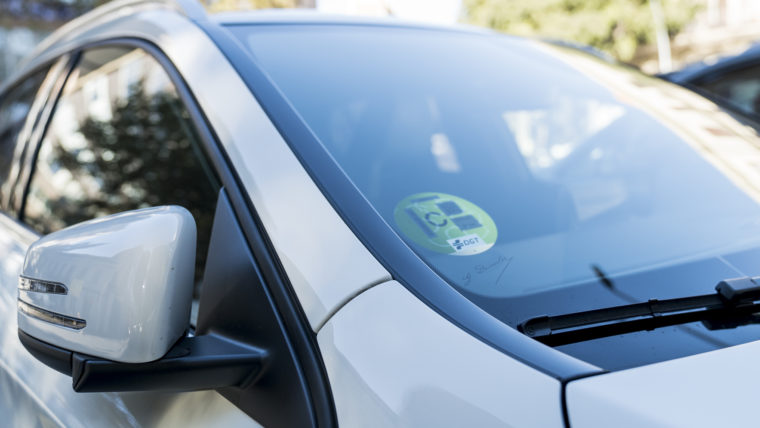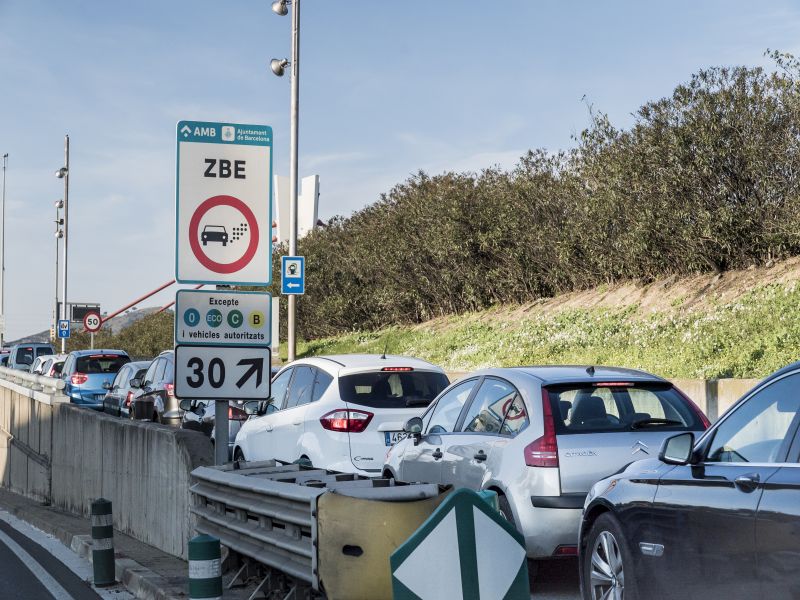The LEZ of the Barcelona area: a model for cities throughout Spain
The new law approved by the Spanish government on climate change and the energy transition will make the establishment of an urban low emissions zone mandatory in every town or city in the country with a population of more than 50,000 inhabitants. This means that 148 towns and cities throughout Spain will need to ensure that this is done by 2023. These are measure that will mean an improved quality of life for the 24 million people - 52% of the population of Spain - who are currently breathing polluted air.

On Thursday 17 June in Madrid, the Barcelona Metropolitan Area (AMB), the Spanish Federation of Municipalities and Provinces (FEMP) and the Directorate-General for Traffic (DGT) presented the first technical guide for the implementation of Low Emission Zones (LEZ) throughout Spain.
The guide is based on the Barcelona LEZ which was created by the Barcelona Metropolitan Area (AMB) and the five municipalities that are connected by the ring roads, based on the DGT’s vehicle labelling system, and which aims to help municipal authorities to implement similar systems in their particular localities, modelled on the example of the Barcelona Ring Road LEZ.
The guide, which sets out the procedure for the effective implementation of low emissions zones, is available in digital format. The AMB will also be distributing it to municipalities with fewer than 50,000 inhabitants, so that it can serve as a model when they come to introduce their own systems.
According to the guide, the LEZs are constructed around five key elements:
• Shared model ordinances. The implementation of the LEZ is part of a model ordinance shared by all municipalities.
• The DGT’s labelling system. The LEZ is based on the state system of vehicle labelling, devised by the DGT.
• The LEZ 2.0 model. Automatic control using number plate recognition technology is envisaged. There are more than 120 cameras with the ability to read number plates, which makes this one of Spain’s most ambitious projects.
• Common signage. A common signage system for all LEZs. The signage used in Barcelona has recently been adopted by the DGT and is to be introduced in the rest of Spain.
• Communication and public acceptance. The establishment of an LEZ involves multiple actions in terms of communication and the explanation of the reasons behind the implementation of such measures.
Mandatory LEZs in cities with more than 50,000 inhabitants
The new law approved by the Spanish government on climate change and the energy transition makes it mandatory to set up urban LEZs within every town or city in the country with more than 50,000 inhabitants. This means that 148 towns and cities throughout Spain are required to ensure that this is done by 2023.
This will mean improved quality of life for the 24 million people – 52% of the population – who are currently breathing polluted air.
Moreover, low-emission zones are also included in Spain’s Recovery Transformation and Resilience Plan, presented on 7 October 2020 and framed within the new Next Generation EU Recovery Fund. This new fund will allow the country to mobilise an unprecedented volume of investment: up to 140 billion euros over the next six years.
Beyond the Government’s new Climate Change Law, which establishes mandatory measures for the whole of Spain, it should be noted that there have been calls for this type of initiative aimed at improving air quality both within Europe and internationally, such as Directive 2008/50/EC from the European Parliament and the Council of Europe of 21 May 2008; the European Charter for the Safeguarding of Human Rights in the City of 2000; the 2015 Paris Agreement; and the Declaration by the United Nations General Assembly of 25 September 2015.
Barcelona Ring Roads LEZ
Since 1 January 2020, in the interests of safeguarding public health and improving air quality, and in line with what has already been done in over 200 European towns and cities, permanent restrictions on traffic circulation have been introduced in the Barcelona Ring Roads LEZ.
Between the hours of 7 am and 8 pm from Monday to Friday (with the exception of public holidays) the most polluting vehicles, that is those that do not carry a Zero, Eco, C or B environmental label will not be permitted to use the roads within the protected area which covers 95 km². These measures affect all vehicles, regardless of country of registration, and moratoriums have been established for vans, buses, coaches and lorries.
Five metropolitan municipalities are included: Barcelona (except the industrial part of the Zona Franca and the neighbourhood of Vallvidrera, Tibidabo and Les Planes), Sant Adrià de Besòs, L’Hospitalet de Llobregat and part of Esplugues de Llobregat and Cornellà de Llobregat.
Metropolitan Register
The Metropolitan Register is hosted by the zbe.barcelona website, where all the information on the Barcelona Ring Roads LEZ together with details of all the different types of authorisations and exclusions that may apply are to be found.
This is the technological platform where citizens with vehicles that do not have a DGT environmental label can register, as well as foreign vehicles (subsequently applications for authorisations permitting these vehicles to access and use the Barcelona Ring Roads LEZ can be submitted and processed) and other vehicles exempt from the regulations.
The number of accumulated visits currently exceeds 1.5 million. The DGTs labelling and number plate consultation tool has been used 268,000 times. The Metropolitan Register of foreign vehicles and other authorised vehicles has already received over 100,000 requests.
Benefits of the Barcelona Ring Roads LEZ
The introduction of LEZs bring significant benefits. In the case of Barcelona and its surrounding area:
•There has been a reduction of over 50% in the number of vehicles using the roads that do not have an environmental label.
The percentage of vehicles on these roads without an environmental label has risen for 20% in the beginning (2017) to 9-10% during the first half of 2020, and the figure currently stands at 2-2.5%.
•The LEZ has contributed to higher levels of vehicle replacement.
Over the last year, the number of the most polluting vehicles bring scrapped, leading to 80,000 fewer vehicles without an environmental labelon the road.
•95% of those surveyed by the AMB consider pollution to be a significant problem. 93% were aware of the ZBE, 80% viewed it favourably and 53% considered the measure to be fair.
• A study carried out last April by the European Public Health Alliance indicates that LEZs are the most effective measures to reduce pollution caused by the toxins PM10 and NOx.
Source: AMB.






